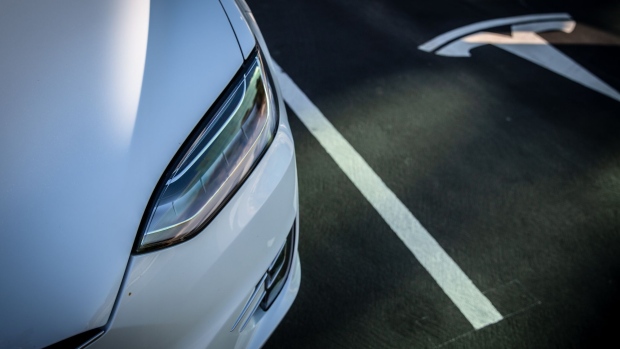Feb 25, 2020
Apple Quizzed on Cell-Phone Policy in NTSB Probe of Tesla Crash
, Bloomberg News

(Bloomberg) -- Federal investigators probing the 2018 fatal crash of a Tesla Inc. SUV, in which an Apple Inc. employee was playing a game on his company-issued phone, have asked the technology giant about its policies on phone use.
The U.S. National Transportation Safety Board, which has for years issued warnings about distracted driving and its deadly toll on the roadways, asked Apple last year whether it has taken steps to ensure employees don’t misuse their devices.
“I checked around with various groups and we do not have a policy related to phone use and driving,” wrote an Apple representative in an email response to the NTSB, which was posted to the safety board’s public investigative files on Monday.
The death of 38-year-old Apple engineer Walter Huang in March 2018 in Silicon Valley has put a spotlight on the carmaker, the driver and California authorities who failed to repair the highway barrier he struck after a prior crash. Now the attention may also turn to makers of the mobile devices that have become a growing hazard on the roads.
An Apple spokesman said the company expects its employees to follow the law.
The NTSB is meeting on Tuesday to conclude what caused the crash into a concrete highway barrier at about 70 miles (113 kilometers) per hour and to issue recommendations to help prevent such crashes in the future.
Public files indicate the crash followed a variety of missteps and errors. The car’s automated driving system veered into the barrier. The driver, who didn’t have his hands on the wheel, had been playing a game on his phone. And a protective barrier on the highway wasn’t in place.
In addition, Tesla and government agencies haven’t bothered to respond to NTSB’s recommendations related to an earlier, similar crash. The U.S. Department of Transportation is required by law to respond to NTSB recommendations, but didn’t do so after the earlier crash, NTSB records show.
The crash also focuses on a long-standing concern by the NTSB and highway safety advocates that there should be technological solutions to the growing problem of distracted driving.
The NTSB in 2011 urged two trade associations for consumer electronics makers and wireless service providers to encourage the development of systems to disable mobile devices within the reach of a driver while a vehicle is in motion. The agency said at the time that such a feature should allow drivers to use the device in an emergency and to distinguish between drivers and passenger.
In response, Consumers Electronics Association President Gary Shapiro told the NTSB in 2012 that the group supported prohibiting text messaging while behind the wheel, though it disagreed that a ban on non-emergency use of mobile devices while driving was warranted.
Smartphone manufacturers and software developers have taken some steps to address distracted driving. Apple’s iPhone, for example, has a feature to block text message and other notifications when driving that a user can activate in the phone’s settings.
“The challenge is that they’re all passive systems. They require you as the owner of the phone to take that action, and many won’t or don’t because they don’t have to,” said Kelly Nantel, vice president of roadway safety at the National Safety Council.
To contact the reporters on this story: Ryan Beene in Washington at rbeene@bloomberg.net;Alan Levin in Washington at alevin24@bloomberg.net
To contact the editors responsible for this story: Jon Morgan at jmorgan97@bloomberg.net, Elizabeth Wasserman
©2020 Bloomberg L.P.





